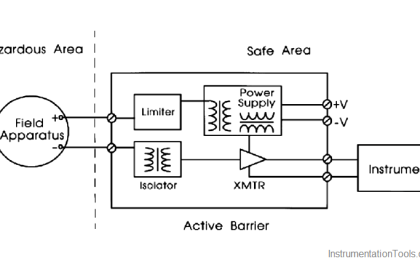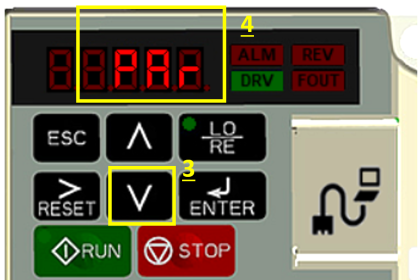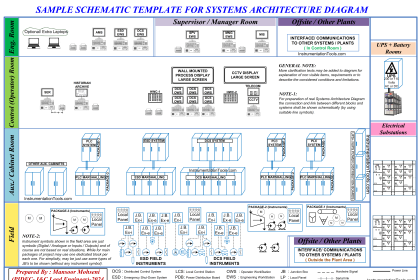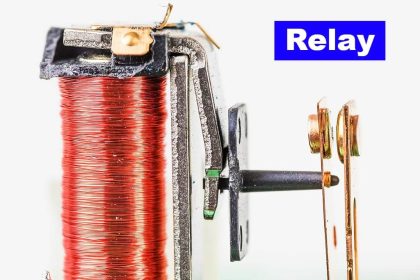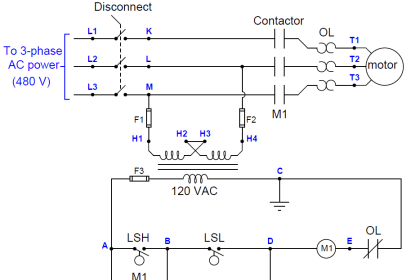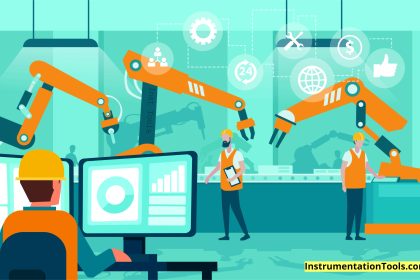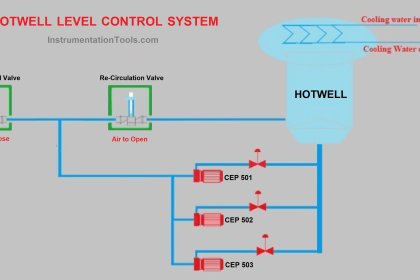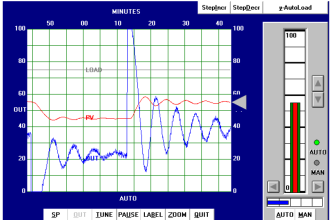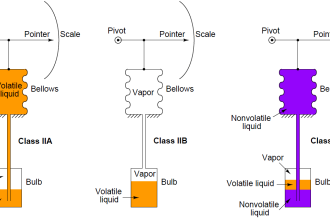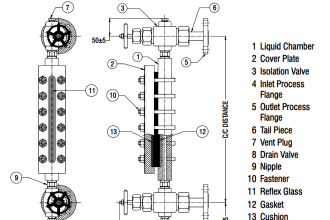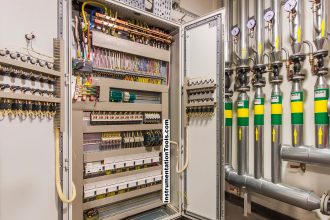Nowadays, due to the busy life schedule of people, we mostly in hand data available on time without much effort.
In this sense, suppose we are talking about industrial automation, engineers demand sometimes to get data on the spot without opening their laptops or other PC systems. This means the option available for this is mobiles and tablets. So, an instant idea that comes to our mind is a mobile app.
Mobile Apps
A mobile app is the simplest and most practical thing that we see in our day-to-day lives for getting data. This shows that mobile apps play a very important role in industrial automation too.
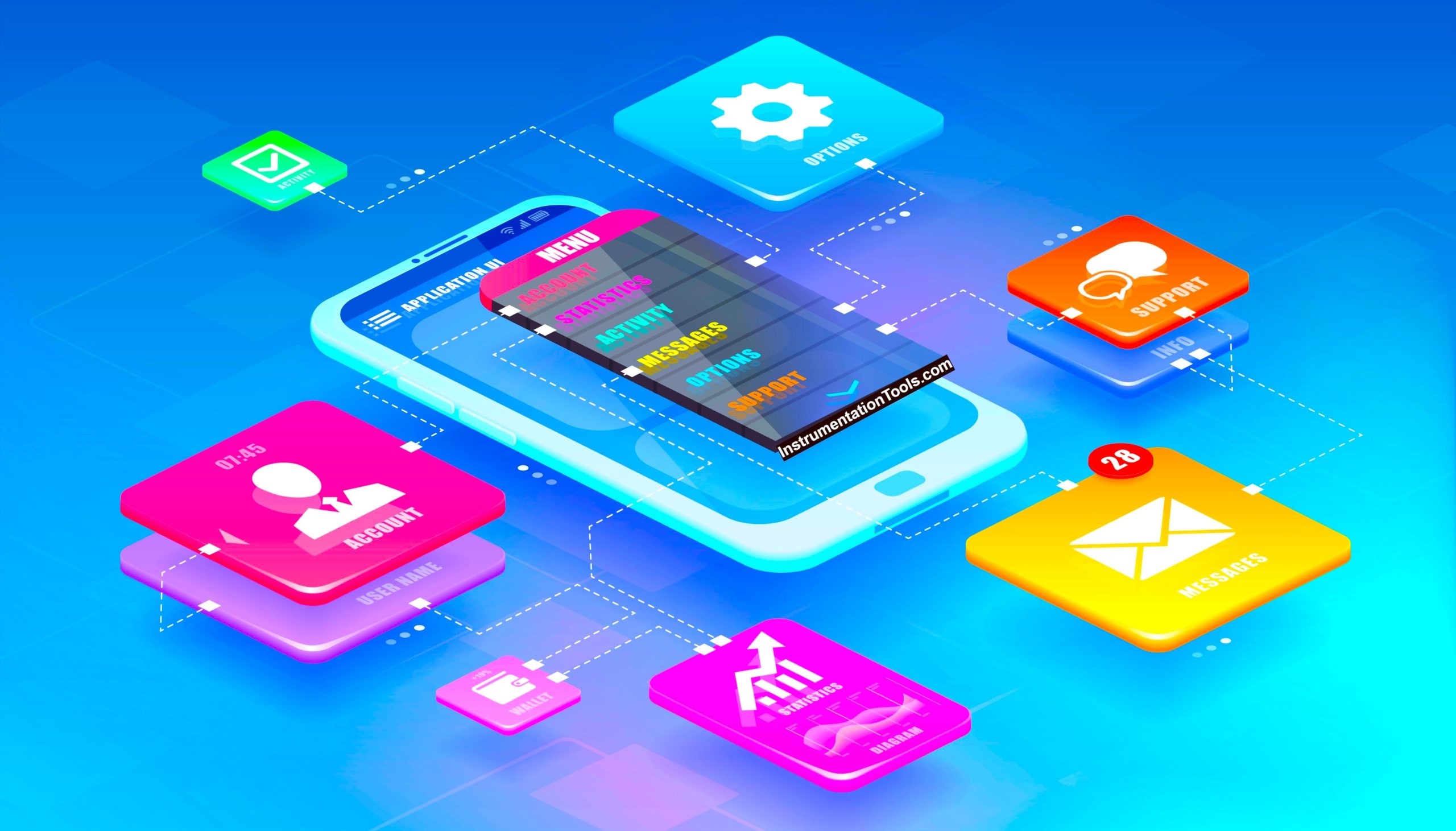
In this post, we will see the concept of mobile apps in industrial automation.
Apps from Google Playstore:
Instrumentation Tools
The “Instrumentation Tools” app, created by S Bharadwaj Reddy, is a detailed resource for engineers and students specializing in PLC, Instrumentation, Electrical, and Electronics. This app serves as a unique learning platform, offering a wide range of technical articles, tools, guides, and MS Excel spreadsheets.
The app covers a broad spectrum of topics, including Instrumentation Engineering, Control Systems, Distributed Control Systems (DCS), Emergency Shutdown Systems (ESD), Programmable Logic Controllers (PLC), SCADA & RTU, and various aspects of electrical and electronics engineering. It’s updated daily with new articles and tools, making it a dynamic and evolving resource for professionals and students alike.
RealPars
Overview: RealPars is an educational app that stands out as a leading provider of over 50 courses in the Netherlands, focusing on industrial technology. Since its inception in 2017, RealPars has trained over 1 million individuals, offering a versatile platform for learning about various aspects of industrial technology.
The app is designed to facilitate learning at the user’s convenience, whether at work, home, or during commutes, with a variety of lesson types including video, audio, and text, all formatted for mobile use.
PLC Animator – Simulator App
The “PLC Animator – Simulator App” by PLC Academy & Sticky Games is a PLC (Programmable Logic Controller) simulator designed for automation developers. It offers a platform for learning and practicing PLC programming in ladder logic language.
This app is particularly useful for those interested in automation, robotics, or mechatronics. It allows users to create and run PLC programs, test logic using various functions, and visualize animations to better understand PLC operations.
App link: PLC Animator
PLC Ladder Simulator 2
The “PLC Ladder Simulator 2” by Sergio Daniel Castañeda Niño is an advanced simulator for the Android operating system, designed to emulate the I/O ports of a real PLC.
This app is particularly useful for those involved in industrial automation, as PLCs play a crucial role in controlling industrial processes. The app’s primary language is “ladder logic,” a graphical language that originated from relay logic diagrams used in electronic circuits before the advent of PLCs.
EveryCircuit
“EveryCircuit” is an interactive app for building and simulating electronic circuits, developed by MuseMaze. It’s designed to provide a deep understanding of how electronic circuits work through dynamic simulations. Users can build any circuit, tap the play button, and watch voltage, current, and charge animations in real time.
The app includes a custom-built simulation engine optimized for mobile use, featuring serious numerical methods and realistic device models. It covers Ohm’s law, Kirchhoff’s current and voltage laws, nonlinear semiconductor device equations, and more.
PROTO – Circuit Simulator
PROTO – Circuit Simulator, developed by PROTO, is a real-time electronic circuit simulator that allows users to set up a circuit with various components and simulate the behavior of the electronic circuit.
This app is particularly useful for those interested in or working with electronics, as it enables the checking of voltages, currents, and many other variables during simulation.
Electric Circuit Calculator
The “Electric Circuit Calculator” app by Math Apps is a free tool designed to assist in various electrical calculations. It enables users to calculate current in parallel circuits (both total and partial), voltage in series circuits (both total and partial), and resistance in both parallel and series circuits.
This app is particularly useful for students and professionals in the field of electricity and electrical engineering, providing a straightforward and user-friendly interface for essential electrical calculations.
Logic Circuit Simulator Pro
“Logic Circuit Simulator Pro” is an app developed by Stefan Belinov, designed to facilitate learning in electronics and electrical engineering through digital simulation. It provides a comprehensive field for designing digital circuits, making it a valuable tool for those interested in understanding how electronics work.
The app is comparable to well-known electronics software like Multisim, SPICE, LTspice, Proteus, and Altium, offering a user-friendly interface and a wide range of options for creating and experimenting with logic circuits.
ElectroBox – Electronics
“ElectroBox – Electronics,” developed by Stefan Belinov, is a versatile toolbox, reference book, and set of electronics calculators, all rolled into one app. It’s designed for electricians, engineers, students, and DIY enthusiasts, offering a comprehensive collection of information and tools related to electronics.
The app is structured to be accessible for users of all levels, from advanced engineers to beginners. It includes a vast library of interfaces, resources, pinouts, and calculators, ranging from resistor color codes to voltage divider calculators.
Electronics Calculator
The “Electronics Calculator” app by AppDevGenie is a versatile utility application that includes a variety of calculators, conversions, reference tables, and a basic pocket calculator, catering to the needs of hobbyists and professionals in electronics.
The app features calculators for both DC and AC circuits, power supply calculations, component-specific calculations, and physics-related calculations like Coulomb’s Law and Magnetism.
PLC Simulator, Mechatronics, P
“PLC Simulator, Mechatronics, P” by DavidRWhite is an app designed to assist beginners in understanding the basics of PLCs and experimenting with simple programming using a simulator. This app is structured into three main sections: “How PLC Works,” “PLC Block Diagram,” and the PLC Simulator itself.
The simulator enables beginners to learn basic programming skills using three timers, two counters, six comparison instructions, two binary outputs, and three RES outputs. The user interface is friendly and includes information icons to demonstrate how easy programming can be with this app.
Macro PLC – Ladder Simulator
“Macro PLC – Ladder Simulator” is a PLC ladder programming simulator app developed by Desarrollo Aplicado. It’s designed to be a simple yet powerful tool for learning and practicing ladder logic programming, a key component in PLC operations.
The app supports real-time execution of ladder logic simulations, offering features like simulated inputs and outputs, timers, counters, internal flags, comparators, and edge detectors.
Process Control Instrumentation
“Process Control Instrumentation” is an app developed to provide introductory information for those starting a career in industrial process control, particularly in instrumentation.
The app includes brief summaries of equipment, their advantages and disadvantages, manufacturers, variations, and operating principles.
RTD Converter
The “RTD Converter” app, developed by Status Instruments, is a practical tool for converting values between different temperature and resistance types. It supports conversions of Celsius, Fahrenheit, Pt100, Pt500, and Pt1000 into each other.
The app is user-friendly, requiring users to input a value into the text field under the desired temperature or resistance type for conversion.
Thermocouple Converter
The “Thermocouple/mV Converter” app by Status Instruments is designed for converting temperatures to and from eight types of thermocouples, or from millivolts (mV) to temperature.
Users can input temperatures in Celsius, Fahrenheit, or Kelvin, and the app will convert these into mV for thermocouple types B, E, J, K, N, R, S, and T.
Process To Signal
“Process To Signal” is an app developed by Status Instruments, designed to calculate process values or output values using system variables.
The app allows users to input lower and upper limits for inputs and outputs from the system, and then calculates corresponding values using specified PV (Process Variable) or output values.
PLC Basics with SCADA and DCS
“PLC Basics with SCADA and DCS” is an educational app developed by DRS Apps, designed to provide foundational knowledge in PLC, SCADA, and DCS.
The app is tailored for students and engineers, simplifying complex concepts in these fields. It covers a range of topics including the history of PLCs, logic gates, and features two PLC brands.
Advantages of Industrial Automation Apps
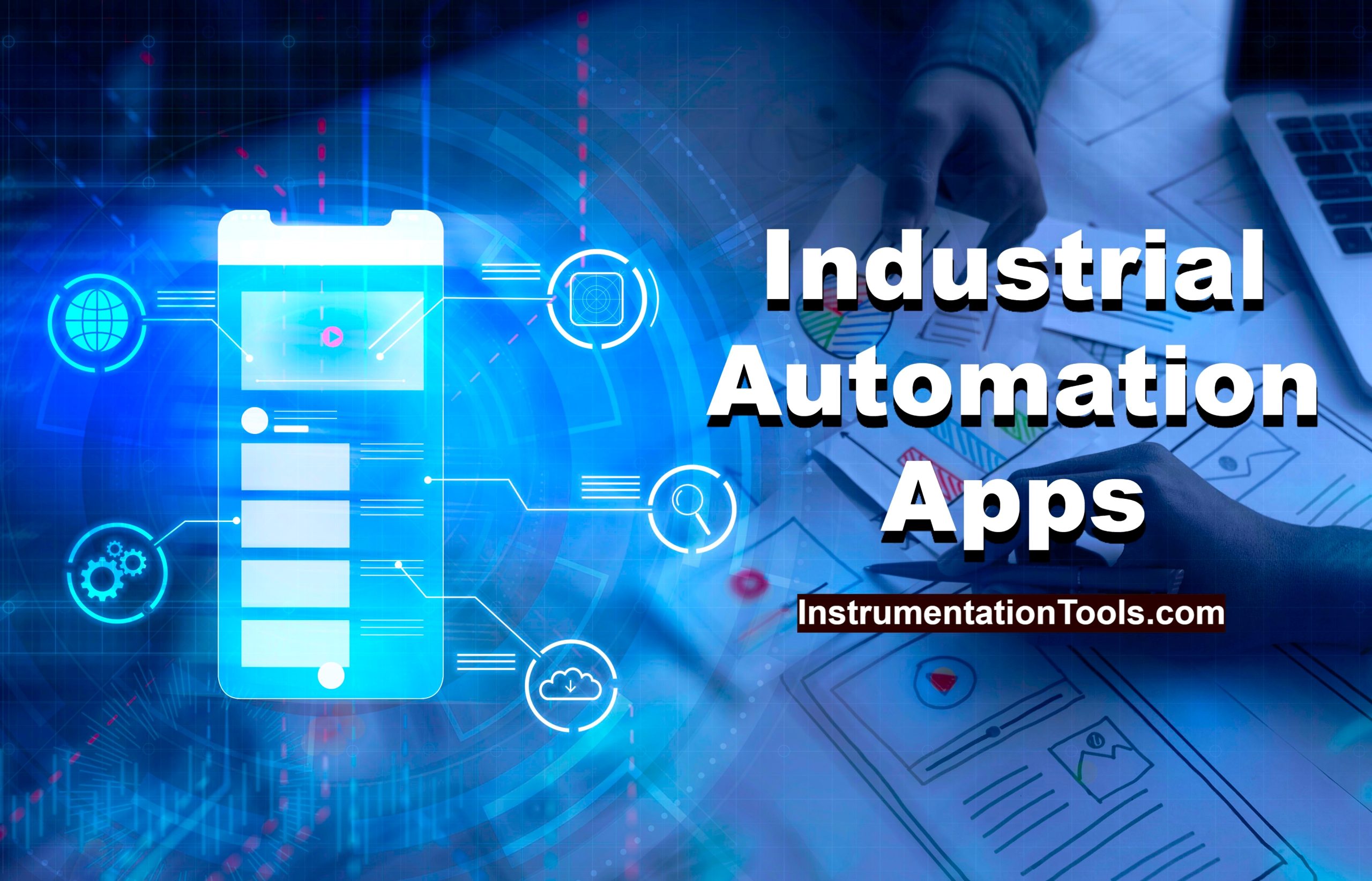
1. The very first use is receiving notifications. Like a mobile app sends notifications, an operator can get alarms and warnings on notifications in mobiles. Once he acknowledges and clicks it, he will get the desired data related to them.
2. The second use is the integration of IoT. As IoT is also related to mobiles for sharing data at high-speed networks, mobile apps enable seamless connections with the operators. They can get data as well as share data so that their supervisor sitting at a remote location can access it and control the situation accordingly.
3. As IoT merges MES and ERP, all the plant engineers and concerned department people like production, finance, logistics, and maintenance can jointly share data on mobiles quickly and get their work done.
4. Program and graphic designers design apps in such a way that plant graphics, status, and controls are done in an exact compact manner which comforts the user in operating them. This helps them view and control the plant more easily, no matter where he is sitting right now.
5. Accessing data in quick time helps in providing quick support to customers, reducing downtime, handling critical situations smoothly, and saving time and cost in operating systems. This is because people find it easier to gain access to mobiles than laptops.
6. One of the most important highlights is the viewing of live videos and images through cameras installed at sites. As the network is going strong nowadays, operators can see videos and images of operations easily through mobiles and take any required action.
7. If one sees the HART protocol, their sole purpose is to set and monitor all sensor data sitting in one location. Due to mobile apps, they can communicate with HART devices through any Bluetooth-enabled mobile device. Due to this, they can control and monitor all data smoothly and make apt use of the HART protocol as requested.
8. One of the most important advantages of mobile apps is quick access, faster network connectivity, and easy interactions. Opening a laptop, waiting for the system to start, and then control system is more hectic than just opening a mobile app and doing the same thing.
9. If a local control panel is located far from the operator’s location, then going all the way to the field site and monitoring and controlling the same is more difficult than just sitting in the control room and seeing the action through mobile apps.
10. Mobile apps can replace small HMI or IPC panels as not required. This is because the same data can be controlled through mobiles and there is no use in installing them. This saves cost and helps in compacting the system instead of unnecessarily increasing devices. Also, it saves space and gives the option to use it for other things.
11. It is not to worry whether you have a non-Android mobile. This is because almost all the mobile OS providers vent to compete in business and so, they will provide mobile apps compatible to their platforms. So, all mobile users can access automation data through apps.
12. Users need not to worry about security. It is first of all recommended to designers to properly authenticate users and secure data. Access should be role-based and only correct credentials must be accepted. This enables secure access to data and prevents any unwanted leakage. So, mobile app users get the same advantages mostly as they get to see in HMI or SCADA.
In conclusion, one thing to note is that mobile app developers should work closely with corresponding PLC and SCADA systems, for proper data integration. Yes, they are costly to design and manage, but they have their own set of advantages too.
In this way, we saw the use of mobile apps in industrial automation.
If you liked this article, then please subscribe to our YouTube Channel for Instrumentation, Electrical, PLC, and SCADA video tutorials.
You can also follow us on Facebook and Twitter to receive daily updates.
Read Next:
- What is CODESYS?
- MOVE Instruction in PLC
- Allen Bradley PLC Hardware
- Motor Classic Control Circuits
- How to Design an Effective HMI?
